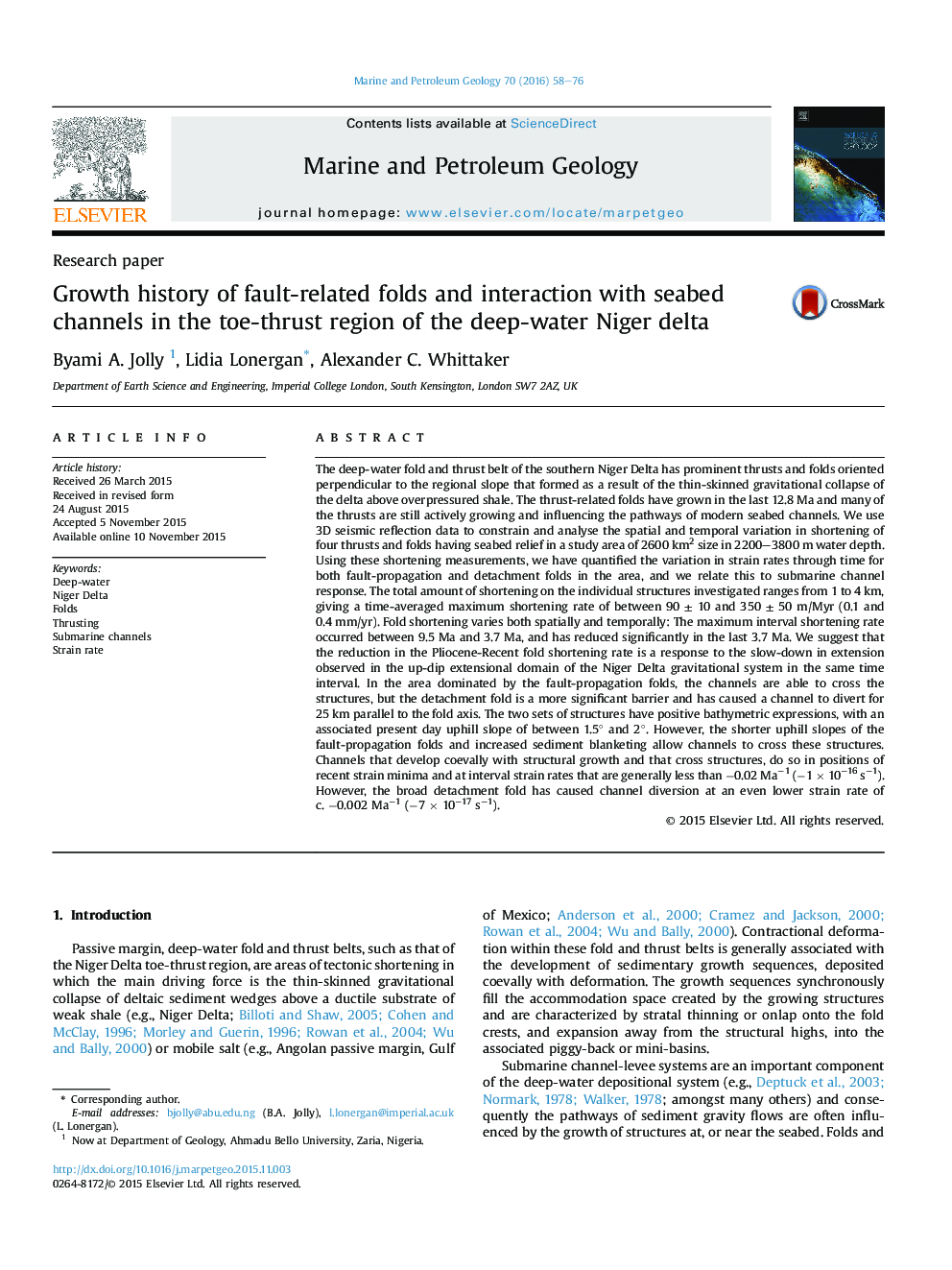| کد مقاله | کد نشریه | سال انتشار | مقاله انگلیسی | نسخه تمام متن |
|---|---|---|---|---|
| 4695445 | 1637157 | 2016 | 19 صفحه PDF | دانلود رایگان |
• The spatio-temporal shortening and growth-rate of thrust-related folds is quantified.
• Fold growth rate slowed in last 3.7 Ma in response to reduction in sediment supply to the delta.
• Channels cross folds in positions of recent strain minima (strain rates <−0.02 Ma−1).
• The maximum crestal uplift rate of folds that deflect channels is 0.05 mm/yr.
• Factors affecting channel response to active bathymetry are discussed.
The deep-water fold and thrust belt of the southern Niger Delta has prominent thrusts and folds oriented perpendicular to the regional slope that formed as a result of the thin-skinned gravitational collapse of the delta above overpressured shale. The thrust-related folds have grown in the last 12.8 Ma and many of the thrusts are still actively growing and influencing the pathways of modern seabed channels. We use 3D seismic reflection data to constrain and analyse the spatial and temporal variation in shortening of four thrusts and folds having seabed relief in a study area of 2600 km2 size in 2200–3800 m water depth. Using these shortening measurements, we have quantified the variation in strain rates through time for both fault-propagation and detachment folds in the area, and we relate this to submarine channel response. The total amount of shortening on the individual structures investigated ranges from 1 to 4 km, giving a time-averaged maximum shortening rate of between 90 ± 10 and 350 ± 50 m/Myr (0.1 and 0.4 mm/yr). Fold shortening varies both spatially and temporally: The maximum interval shortening rate occurred between 9.5 Ma and 3.7 Ma, and has reduced significantly in the last 3.7 Ma. We suggest that the reduction in the Pliocene-Recent fold shortening rate is a response to the slow-down in extension observed in the up-dip extensional domain of the Niger Delta gravitational system in the same time interval. In the area dominated by the fault-propagation folds, the channels are able to cross the structures, but the detachment fold is a more significant barrier and has caused a channel to divert for 25 km parallel to the fold axis. The two sets of structures have positive bathymetric expressions, with an associated present day uphill slope of between 1.5° and 2°. However, the shorter uphill slopes of the fault-propagation folds and increased sediment blanketing allow channels to cross these structures. Channels that develop coevally with structural growth and that cross structures, do so in positions of recent strain minima and at interval strain rates that are generally less than −0.02 Ma−1 (−1 × 10−16 s−1). However, the broad detachment fold has caused channel diversion at an even lower strain rate of c. −0.002 Ma−1 (−7 × 10−17 s−1).
Journal: Marine and Petroleum Geology - Volume 70, February 2016, Pages 58–76
